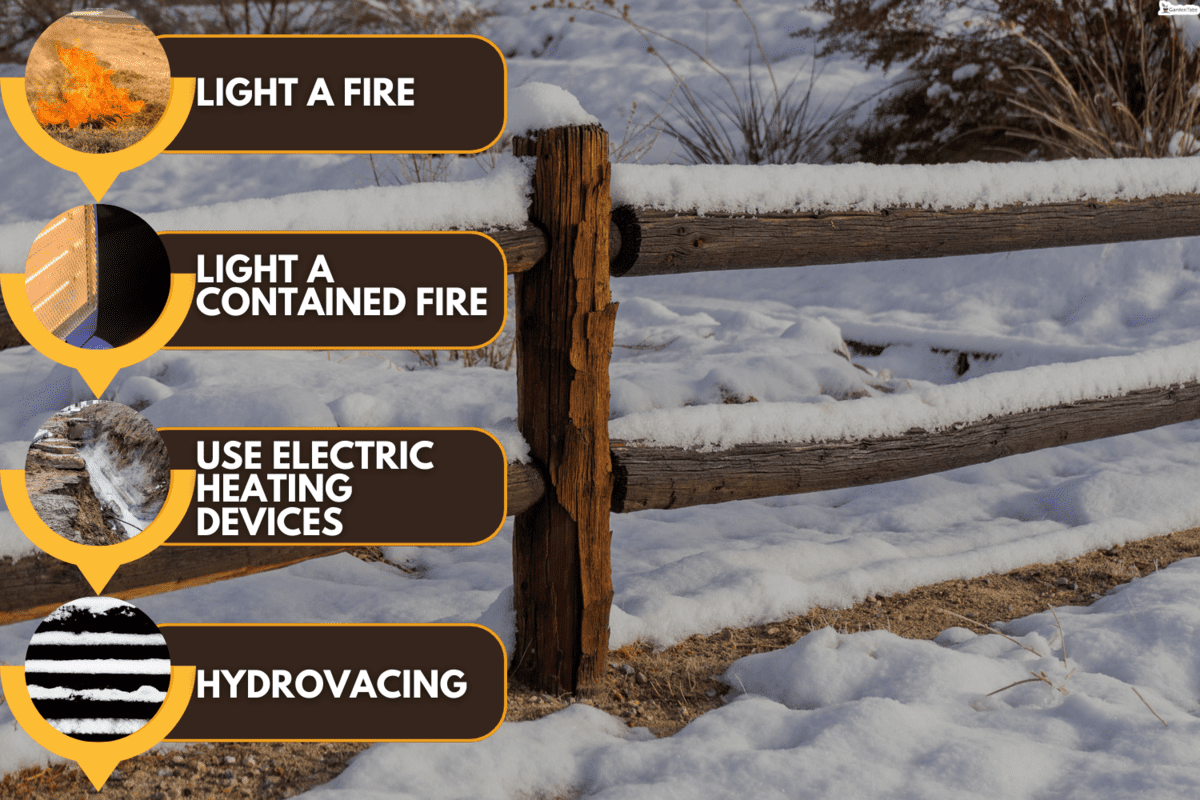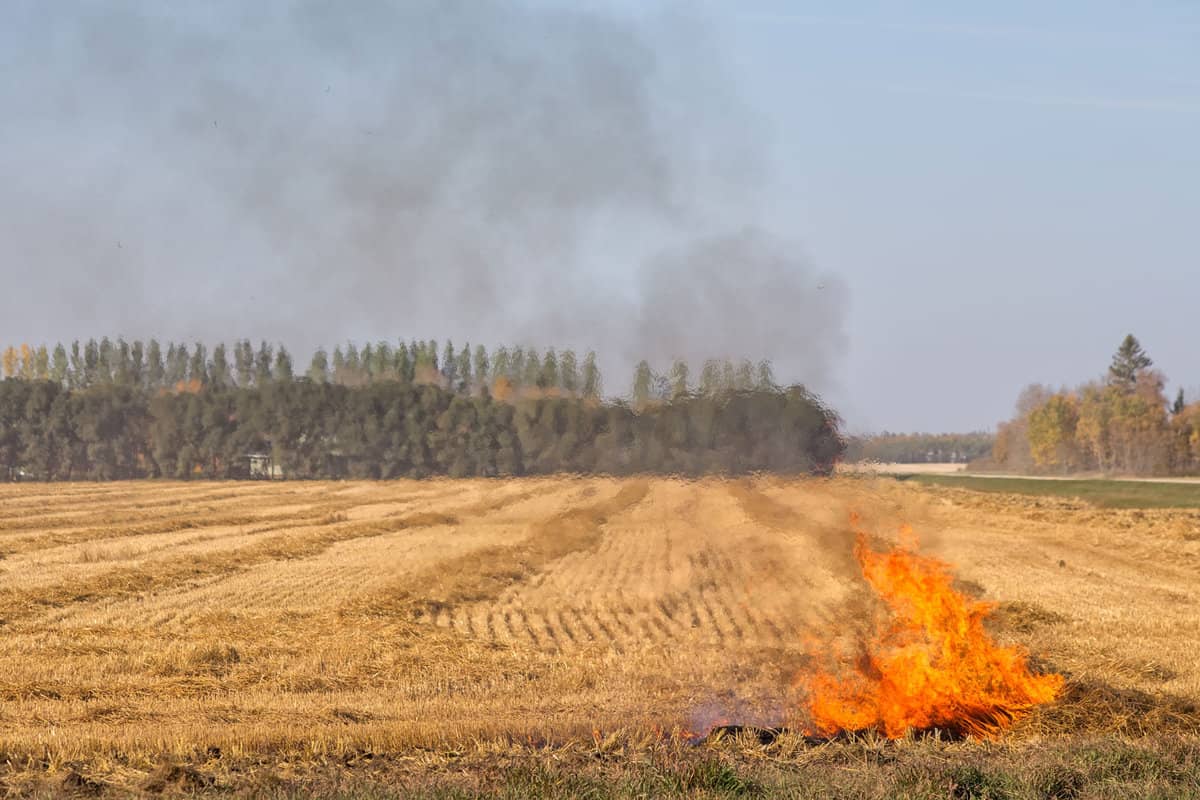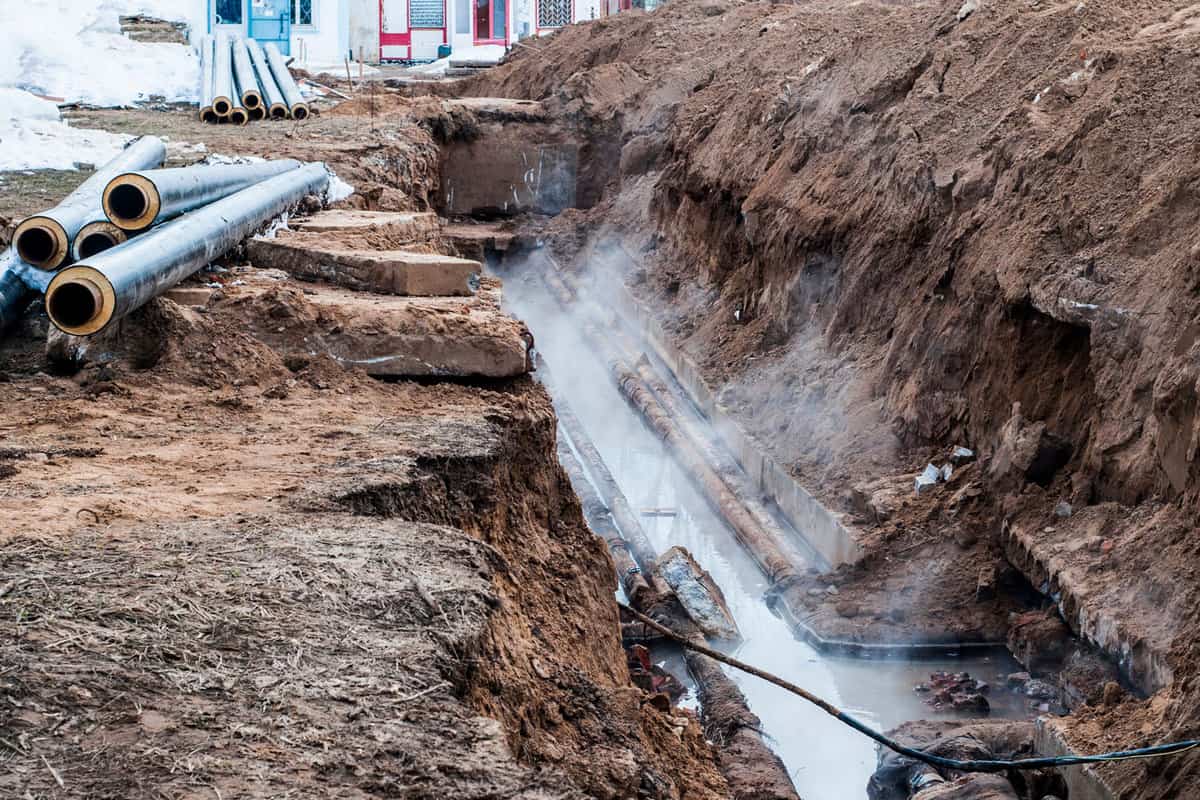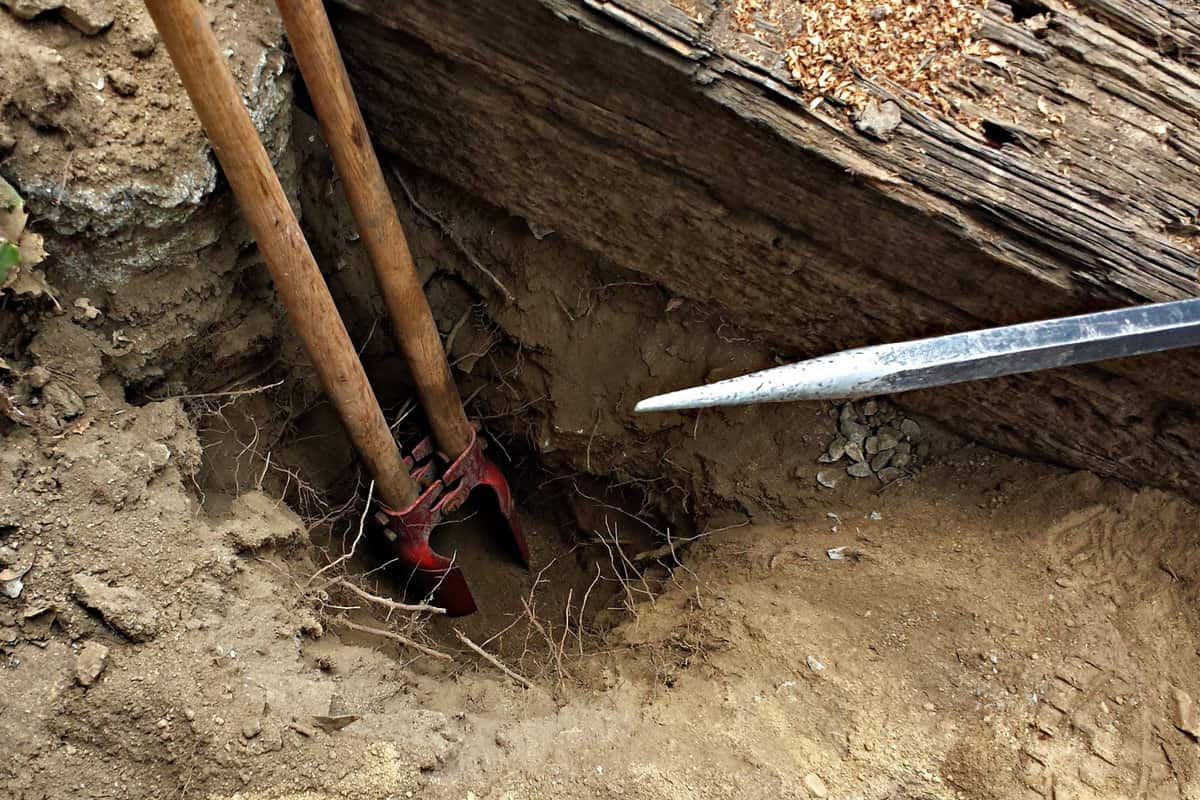Although most gardening action takes place in the warmer months, the work never really ends. That's why you might find yourself faced with the situation of needing to dig post holes when the ground is frozen. If that's the case, you're probably wondering if this is possible. Well, you're in the right place. We've done the research and will answer your question here and share some other helpful information.
Yes, it is possible to dig a post hole in winter. You'll just need to do some extra prep work in order to thaw the ground.
This is usually done by lighting a fire in the area you need to dig. You can use an open fire or a special tool that contains the fire exactly where you need it. After this, the usual tools like an auger or other post-hole digger will work.
However, if you live in a very cold area like some parts of the upper Midwest and Great Plains regions, digging post holes in winter might not be a good idea.
That's because to prevent future problems; you need to dig the hole to a depth below the frost line. Since the frost line in these areas can be as deep as 4 or 5 feet below the ground, this might be difficult to accomplish during winter.
If you have other questions about digging post holes in winter, stick around because we have answers! We'll make sure to share them in the rest of this article.
Can You Dig Post Holes In Winter?

The short answer is yes, you can. The longer answer is that it will take some effort, but if you effectively prep the ground, you'll be digging post holes in no time.
Digging post holes in winter becomes challenging because when the ground freezes, it can get harder than concrete. This is especially true if your soil contains a lot of moisture. It also depends on how low the overall temperature falls where you're located.
Before you dig, you'll need the ground to thaw at least partially to allow the tools to sink into the soil. However, you might need to try a few different approaches depending on the level of frozen ground you're working with. Thankfully, there are multiple methods that work.
How Can You Thaw Ground To Dig Post Holes In Winter?

All of these methods for thawing ground involve applying heat but in slightly different ways. Here are a few you can try:
Light A Fire

The simplest way to thaw the ground is to light a fire over the area you want to dig. This is one of the most effective methods if the ground is extremely frozen. However, it's also one of the riskiest because it involves open fire.
If you try it, make sure that anything flammable, like equipment or fallen branches, is cleared away. Also, ensure that someone is watching the fire the entire it's burning. Never leave it unattended to burn overnight because flammable materials could blow in and spread the fire.
- To thaw the ground using the open fire method:
- Clear away the snow down to the ground using a shovel.
- Light a small fire using charcoal or wood. Let it burn down until the ground gets soft.
- If you need to dig a particularly deep hole, you might need to thaw the ground, clear the embers, and dig part of the hole.
- When the ground gets too hard again, put the embers back in, light another fire to thaw the next section, and repeat the process as necessary.
Light A Contained Fire

If you have concerns about the safety of lighting an open fire, you can keep it contained under a homemade "oven." This method requires some more tools and prep work, but it might be worth it if you have a lot of holes to dig. Plus, since the fire's heat is more highly concentrated, it can thaw the ground more rapidly than an open fire.
To prepare your "oven," cut small holes around the lip of a large metal container like a half barrel. You can use a cutting torch or metal shears. These holes allow air to pass through, so the fire keeps burning. Next, cut a hole around 4 to 5 inches in diameter in the bottom of the container to act as a chimney.
To use the "oven," light a fire on the ground over the area where you need to dig your post holes. You can use scrap wood or charcoal. Place the "oven" upside down on top of the fire and check to see if any embers are flying out the hole in the top. If there are, place a screen over the hole and weigh it down with rocks.
After a few hours, the ground should be thawed enough to begin digging. If you need to dig a deep hole, simply use the same method discussed above to relight the fire as you dig into the deep layers. To get through more intense freezes, you can also use this method to keep your fire lit all night.
Use Electric Heating Devices

If you'd rather not deal with lighting a fire, you can try electric heating devices like a space heater or electric blanket. You'll just need to be careful to clear away as much snow as possible to avoid shorting your equipment. Use extension cords specially made for outdoor use to prevent moisture from seeping into it.
This method works best when the ground is only slightly frozen. That's because it won't get as hot as if you lit an actual fire.
However, you can maximize the heat by rigging a tent over the heater or blanket. Use a tarp or regular blanket and prop it up over a brick or pile of wood. To avoid the risk of fire, just make sure it doesn't touch the heater.
Hydrovacing

A more radical approach is hydrovacing, also known as hydro excavation. This method requires hiring trained professionals. They use warm water sprayed at a high intensity to soften and remove the top layer of soil. Next, the earth is sucked into a machine while the post holes are dug and put back into the ground.
You probably won't need this method unless you have seriously hard ground to dig into. Another possible reason for using hydrovacing is if you suspect that there are pipes underground that may need to be removed.
However, it's a fairly invasive method that can damage the soil, so it's best to use it as a last resort.
Should I Dig Post Holes Below The Frost Line?

Yes, you should always dig your fence post holes below the frost line or the underground line at which groundwater freezes. You can find this information by using a frost tube to test the depth of the frost line. Alternatively, you can look it up using this map from the National Weather Service.
Digging your post holes below the frost line is especially important if you're digging the holes in winter. That's because if the holes are dug more shallowly, the posts could end up shifting and need to be re-adjusted in the spring.
Should I Use A Handheld Auger?
A handheld auger or post-hole digger is a good choice if you have just a few fence posts to install. Longrun makes an excellent handheld auger shaped like a large drill bit attached to a handle.
To use, simply insert the auger into the ground and twist. It can also be used to plant bushes, bulbs, or trees.
Click here to view it on Amazon.
Alternatively, you can use a post-hole digger. This digger from AMES has two blades attached to hardwood handles. To use, insert the blades into the ground and use them to scoop out dirt from the hole.
Click here to check it out on Amazon.
However, if you need to install a long line of post holes, you may want to invest in an auger that attaches to a Bobcat or tractor. You could also get a handheld auger that attaches to a drill to reduce some of the strain on your body.
In Closing
To dig a fence post hole in winter, you'll need to thaw the ground enough to allow you to use your auger or post-hole digger. Here are some methods you can try:
- Light an open fire
- Light a contained fire
- Use electric heating devices
- Hydrovacing
Each of these methods works well in different situations, and a lot depends on the overall temperatures in your region. You'll also need to learn the depth of your frost line. That's because you'll need to install the fence posts deeper than this line to avoid shifting as the soil warms in spring.
We hope this article was helpful to you and taught you some methods that can be used to dig fence post holes in winter!
We've explained how to dig a fence post hole in winter, but if you want to remove one, check out our article "How To Remove A Metal Post From The Ground [A Step-By-Step Guide]."
Finally, for even more information about removing fences, read our article "How To Break Concrete Off Fence Post Base."


